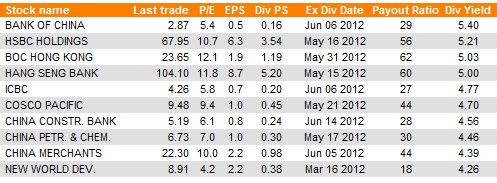
IN LEAN TIMES like these, investors themselves lean toward the guaranteed returns that dividend stocks promise.
While Singapore has a much higher percentage of firms than Hong Kong offering dividend yields of over 5%, not all listcos are as generous to their shareholders.
Below are the top 10 Hong Kong-listed firms with a habit of “reinvesting” in their investors.
It should come as little surprise that seven of them are banks, with lenders occupying the top five spots.

Bank of China Ltd (HK: 3988; SHA: 601988) Div yield: 5.40%
Bank of China is the country’s No.2 lender by market capitalization and the fifth largest worldwide, with a market cap of just under one trillion hkd.
It is the country’s oldest lender, founded a century ago in 1912 and is one of the PRC’s “Big Four Commercial Banks.”
It originally functioned as the country’s central bank until 1928.
In 2006, Bank of China listed in Hong Kong which was at the time the fourth biggest IPO in history.
In 2010, Bank of China via its New York branch became the first PRC lender to offer Chinese yuan currency products to American citizens.
In 2007, Bank of China also acquired Singapore Airlines' stake in Singapore Aircraft Leasing Enterprise, before renaming it BOC Aviation.
However, the Chinese lender’s experience in Singapore has not always been stellar.
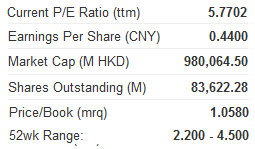
Between 2001 and 2007 the Beijing-based bank initiated extensive layoffs and paycuts for staff at its BOC Singapore Branch, with branch chief Zhu Hua being asked to leave in 2007 by Singapore’s Monetary Authority for his alleged poor performance, after which he was replaced by his compatriot Liu Yanfen.
And just four years ago, during the heart of the global financial meltdown, Chin Chuhmeng -- Head of Settlements at BOC -- was investigated for alleged involvement in Multi-Level Marketing Activities in Singapore, a plot involving employees of the Bank of China and the former Kwangtung Bank.
Nevertheless, despite its spotty record in Singapore, owners of Bank of China’s Hong Kong-listed shares received an industry-leading dividend yield of 5.40% in the most recent payout period.
HSBC Holdings (HK: 5; NYSE: HBC; LSE: HSBA) Div yield: 5.21%
The London-based bank is the world’s second largest lender, with a market cap of 1.24 trillion hkd.
As end-March, HSBC business was roughly half focused on Europe, a quarter in the Americas and the remainder in Asia.
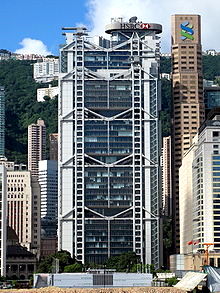
HSBC is also Hong Kong’s largest bank, and has been aggressively expanding in Mainland China where it is the largest operating international bank.
In 2004 HSBC made good on its goal to expand into the mainland, acquiring a 19.9% stake in Bank of Communications of Shanghai.
BOC Hong Kong Holdings Ltd (HK: 2388) Div yield: 5.03%
BOC Hong Kong Holdings Ltd is the parent of Bank of China (Hong Kong) Limited.
Founded in 2001 and listed on the Hong Kong Stock Exchangein 2002, the lender is a Hong Kong-based firm.
BOC Hong Kong Holdings Ltd’s market cap is 251.1 billion hkd.
The bank has the highest P/E ratio of the ten dividend stocks in this list.
Hang Seng Bank Ltd (HK: 11) Div yield: 5.00%
Hang Seng Bank Ltd, Hong Kong’s No.2 lender, is itself 62.1% controlled by HSBC Group.
Its market cap stands at 198.4 billion hkd.
Hong Kong-based Hang Seng Bank Ltd has also been rapidly expanding in its giant neighbor – Mainland China.
In 2004 it purchased a 15.98% stake in Industrial Bank (China) in Fujian Province, and the following year it upgraded its Beijing representative office to branch status.
Hang Seng Bank has been listed in Hong Kong since 1972.
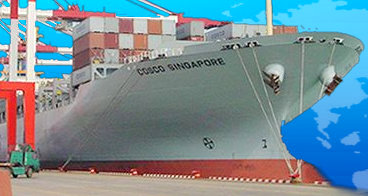
Industrial and Commercial Bank of China Ltd (ICBC; HK: 1398; SHA: 601398) Div yield: 4.77%
ICBC Ltd is the largest bank in the world based on its market cap of 1.62 trillion hkd.
One of China’s “Big Four State-owned Commercial Banks,” ICBC Ltd was founded in 1984.
In late 2006, ICBC was simultaneously listed in both Hong Kong and Shanghai, raising 21.9 billion usd which was at the time the world's biggest IPO.
ICBC became the first firm to list simultaneously on both bourses.
Four years later, Agricultural Bank of China broke ICBC's IPO record by raising 22.1 billion usd.
COSCO Pacific Ltd (HK: 1199) Div yield: 4.70%
COSCO Pacific Ltd is a subsidiary of COSCO Group-owned China COSCO.
Founded in 1994, COSCO Pacific Ltd’s market cap stands at 26.3 billion hkd.
The Hong Kong-based firm is mainly engaged in shipping, container manufacturing and terminal operations.
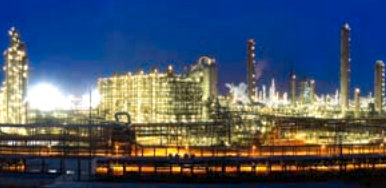
Photo: Company
China Construction Bank Corp (HK: 939; SHA: 601939) Div yield: 4.56%
China Construction Bank is the second biggest bank in the world and in China with a market cap of 1.29 trillion hkd.
Founded in 1954, CCB listed in Hong Kong in 2005, and in Shanghai in 2007.
Beijing-based CCB is also a member of China’s “Big Four State-owned Commercial Banks.”
China Petroleum and Chemical Corp (Sinopec; HK: 386; SHA: 600028) Div yield: 4.46%
Sinopec is one of China’s leading petrochemical plays.
Founded in 2000, Sinopec was simultaneously listed in Hong Kong, New York and London later that year, with a Shanghai listing completed in 2001.
Sinopec’s market cap stands at 654.4 billion hkd.
China Merchants Bank and New World Development round out the list.
See also:
BAD APPLES: Hong Kong’s Listing Laggards
HK SHARES: Trash Already Tossed To Curb
In Praise Of China’s Retail Investors
Whither China Shares?







